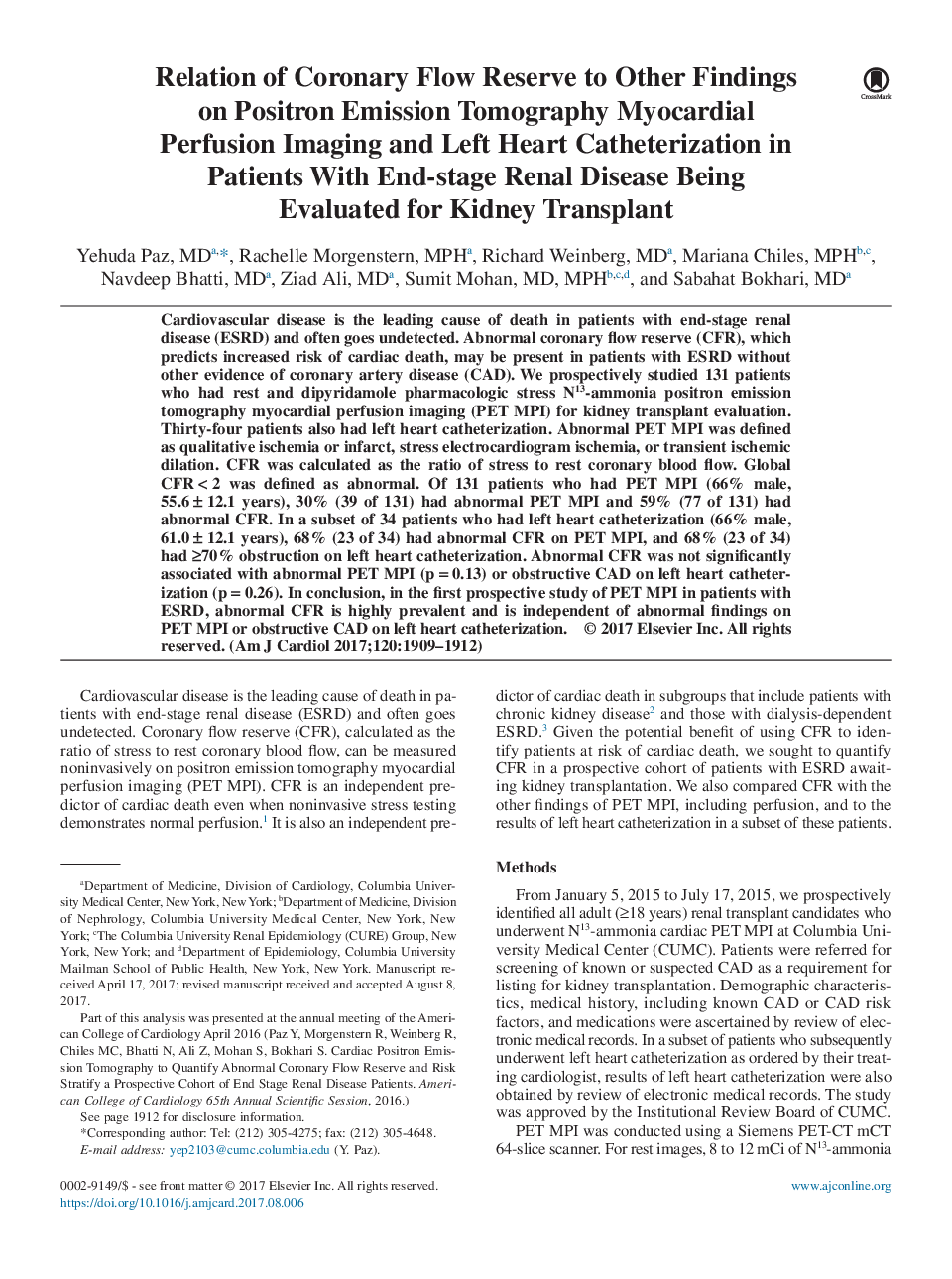| Article ID | Journal | Published Year | Pages | File Type |
|---|---|---|---|---|
| 8651639 | The American Journal of Cardiology | 2017 | 4 Pages |
Abstract
Cardiovascular disease is the leading cause of death in patients with end-stage renal disease (ESRD) and often goes undetected. Abnormal coronary flow reserve (CFR), which predicts increased risk of cardiac death, may be present in patients with ESRD without other evidence of coronary artery disease (CAD). We prospectively studied 131 patients who had rest and dipyridamole pharmacologic stress N13-ammonia positron emission tomography myocardial perfusion imaging (PET MPI) for kidney transplant evaluation. Thirty-four patients also had left heart catheterization. Abnormal PET MPI was defined as qualitative ischemia or infarct, stress electrocardiogram ischemia, or transient ischemic dilation. CFR was calculated as the ratio of stress to rest coronary blood flow. Global CFRâ<â2 was defined as abnormal. Of 131 patients who had PET MPI (66% male, 55.6â±â12.1 years), 30% (39 of 131) had abnormal PET MPI and 59% (77 of 131) had abnormal CFR. In a subset of 34 patients who had left heart catheterization (66% male, 61.0â±â12.1 years), 68% (23 of 34) had abnormal CFR on PET MPI, and 68% (23 of 34) had â¥70% obstruction on left heart catheterization. Abnormal CFR was not significantly associated with abnormal PET MPI (pâ=â0.13) or obstructive CAD on left heart catheterization (pâ=â0.26). In conclusion, in the first prospective study of PET MPI in patients with ESRD, abnormal CFR is highly prevalent and is independent of abnormal findings on PET MPI or obstructive CAD on left heart catheterization.
Related Topics
Health Sciences
Medicine and Dentistry
Cardiology and Cardiovascular Medicine
Authors
Yehuda MD, Rachelle MPH, Richard MD, Mariana MPH, Navdeep MD, Ziad MD, Sumit MD, MPH, Sabahat MD,
